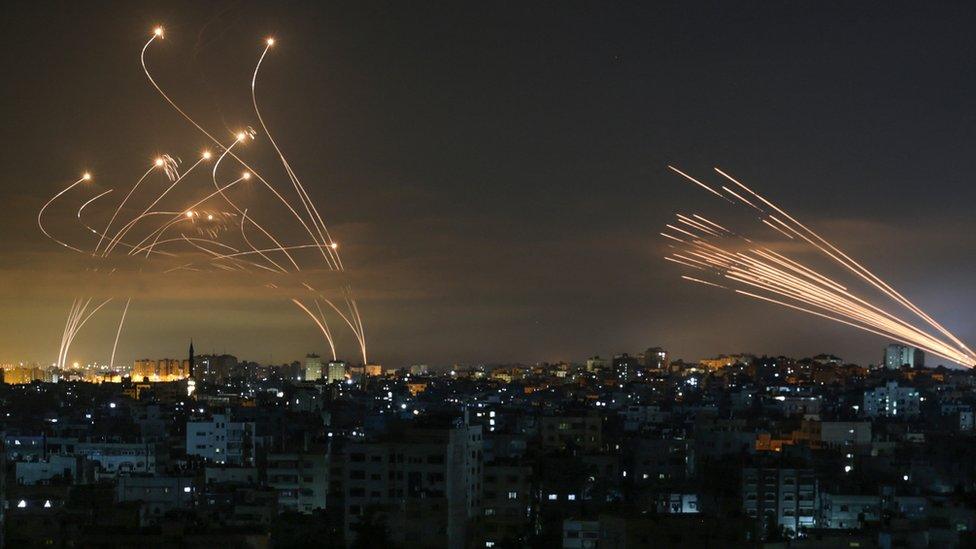All eyes on Israel's response to Iran drone and missile attacks
- Published
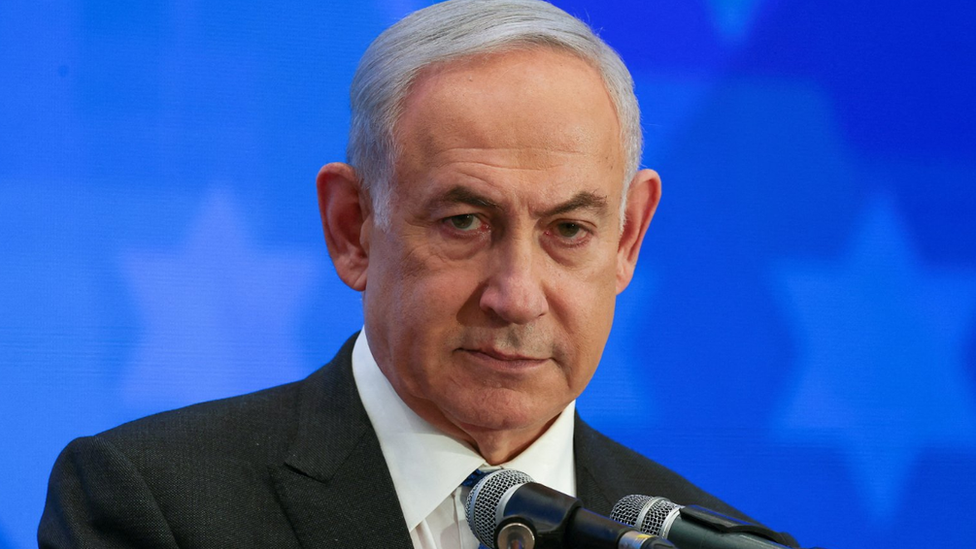
Israeli PM Benjamin Netanyahu convened a war cabinet to discuss the attack, which has been condemned by President Joe Biden and the UN Secretary General
The Israeli military says 99% of the missiles and drones fired by Iran overnight were intercepted without hitting their targets. Iran said the assault was in response to a deadly attack on an Iranian diplomatic compound in Syria two weeks ago.
Where this goes next from here depends in large part on how Israel decides to respond to last night's attack.
Countries in the region and elsewhere, including those that deeply dislike the Iranian regime, have urged restraint.
Iran's position is along the lines of: "Account settled, that is the end of the matter, do not hit back at us or we will mount a much stronger attack against you that you will not be able to ward off."
But, Israel has already vowed "a significant response" and its government has often been called one of the most hardline in Israeli history.
It responded to the murderous Hamas-led attacks of 7 October on southern Israel within hours and then spent the next six months battering the Gaza Strip.
Israel's war cabinet is unlikely to leave this direct attack from Iran unanswered, however calibrated and limited its effect has been on the ground.
Watch: Sirens ring through Jerusalem as projectiles shot down from sky
So what are Israel's options?
It could listen to its neighbours in the region and exercise what is known as "strategic patience", holding off from responding in kind and instead continuing to target Iran's proxy allies in the region such as Hezbollah in Lebanon or military supply sites in Syria, as it has been doing for years.
Israel could retaliate with a series of similar, carefully calibrated, long-range missile strikes, targeting only those missile bases from which Iran launched last night's attack.
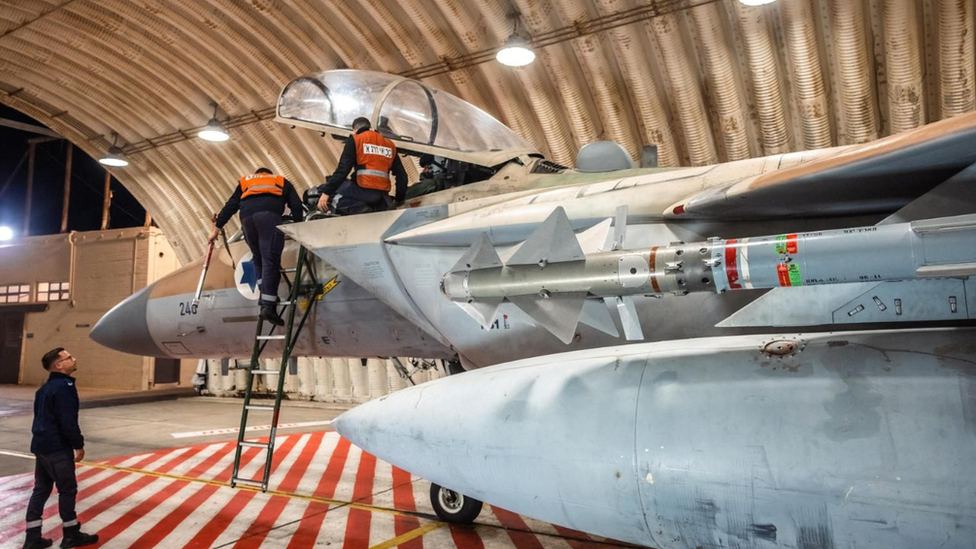
That would still be seen by Iran as an escalation, since it would be a very direct attack by Israel on Iran itself, as opposed to hitting its proxy militias around the region.
Or, Israel could choose to climb one more rung up the escalatory ladder, by broadening its possible response to include bases, training camps and command-and-control centres belonging to Iran's powerful Revolutionary Guards Corps - the IRGC.
Either of the latter two options risk prompting further retaliation by Iran.
The key question here is whether this all drags in the US, leading to a full-scale shooting war between Iran and US forces in the region.

US President Joe Biden met with members of the National Security Council regarding the missile attacks on Israel in the Situation Room of the White House
The US has military facilities in all six of the Gulf Arab states, as well as in Syria, Iraq and Jordan.
These could all become targets for Iran's massive stockpile of ballistic and other missiles that it has managed to build up over the years, despite international sanctions.
Iran could also do something it has long threatened to do if attacked: it could try to close the strategically vital Strait of Hormuz, using mines, drones and fast attack craft, choking off nearly a quarter of the world's oil supplies.
This is the nightmare scenario, dragging in the US and the Gulf states into a region-wide war, which many governments are now working around the clock to avoid.
Related topics
- Published14 April 2024

- Published15 April 2024
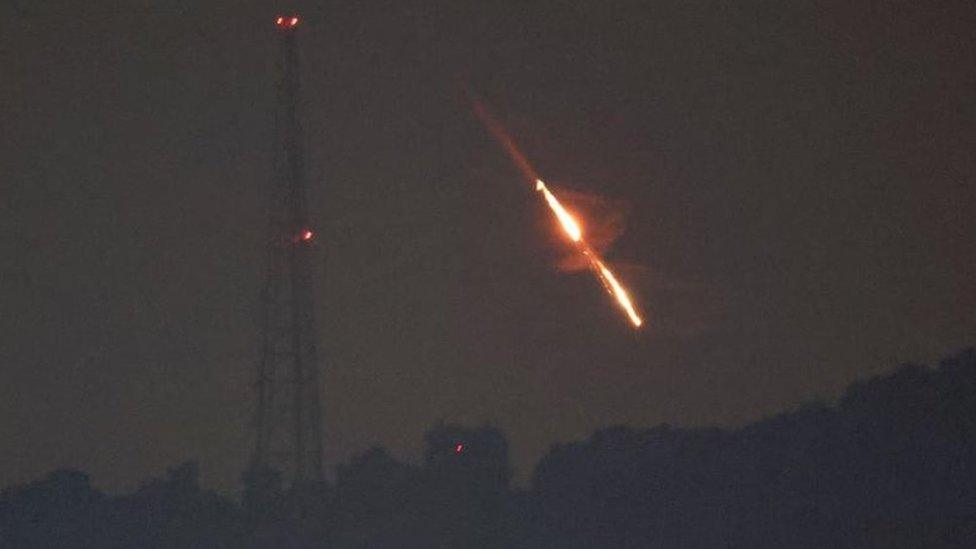
- Published1 April 2024
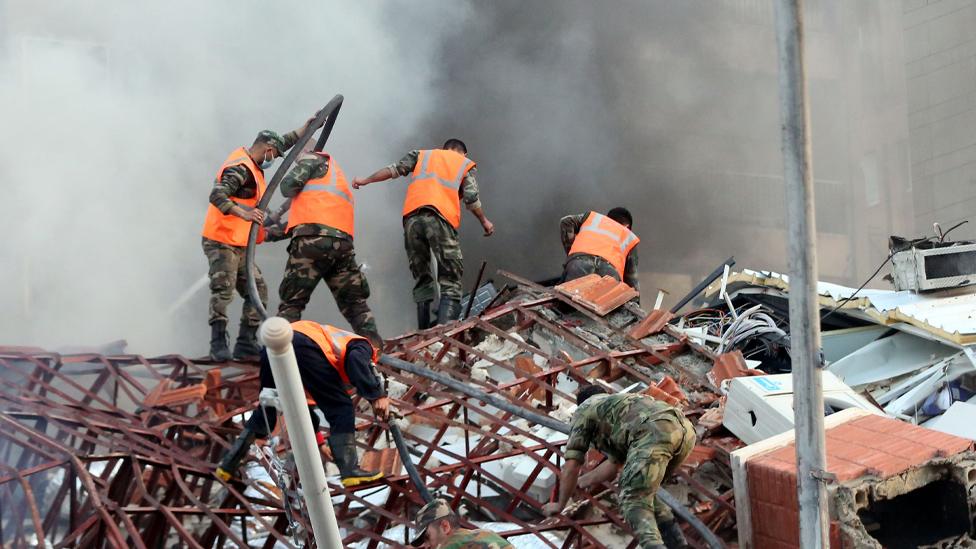
- Published16 October 2024
